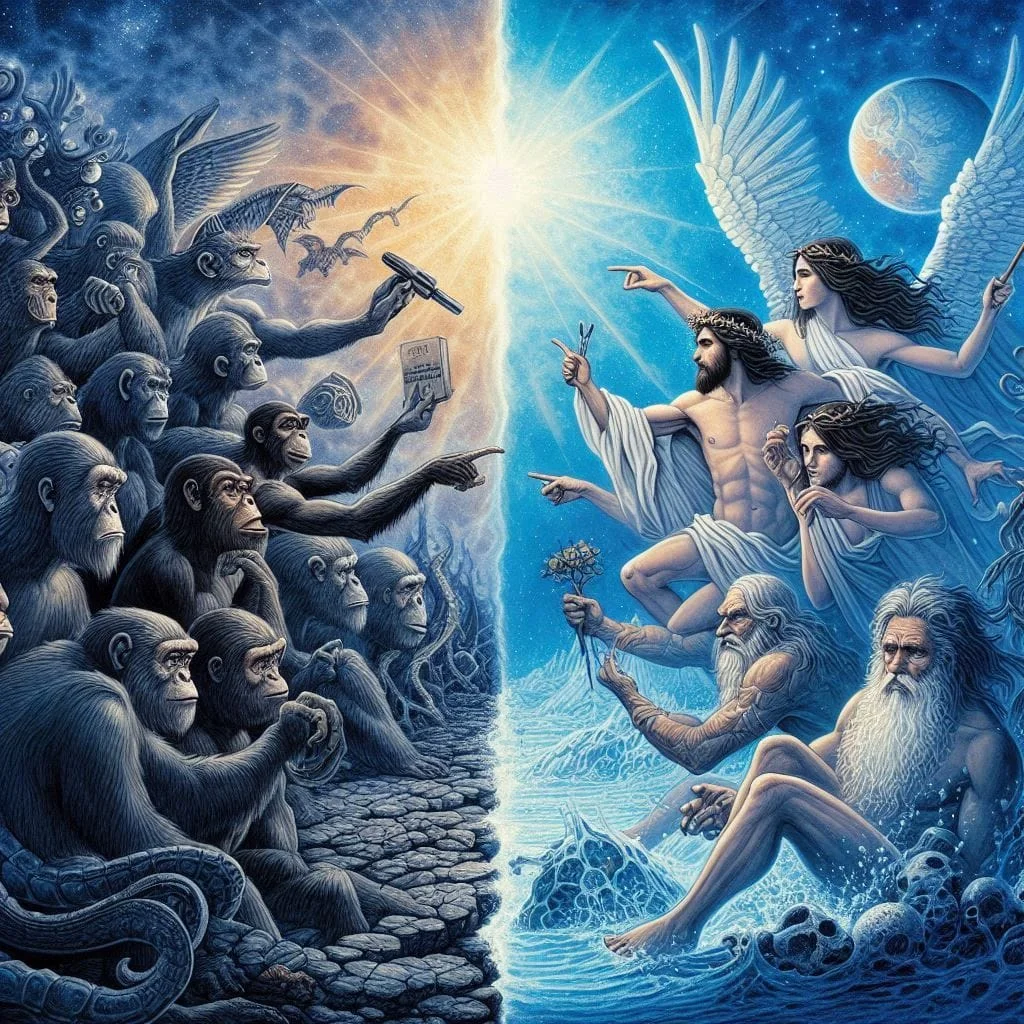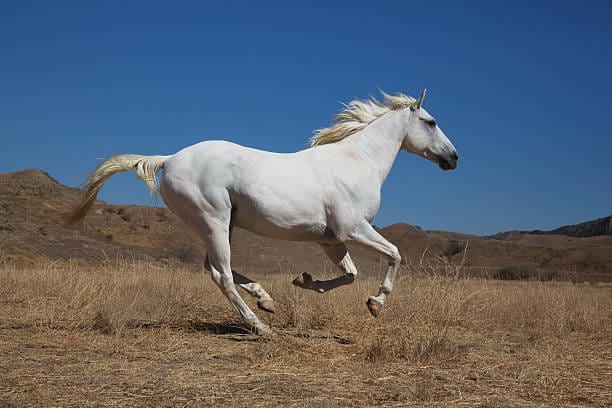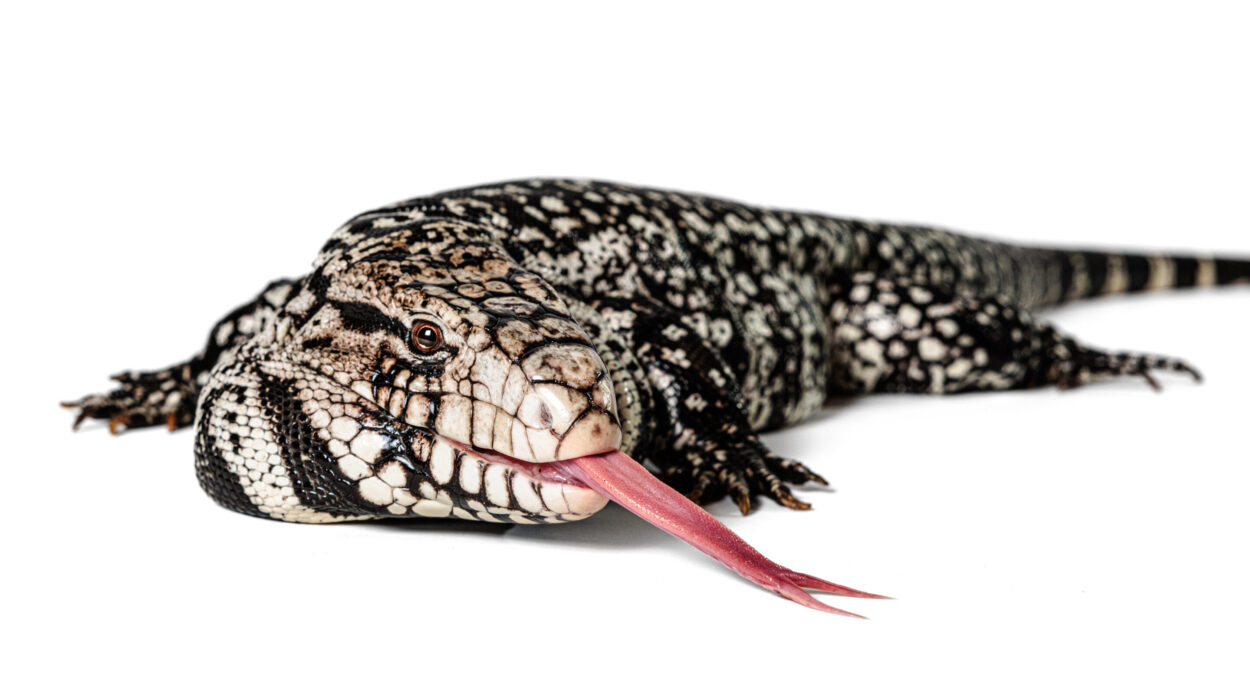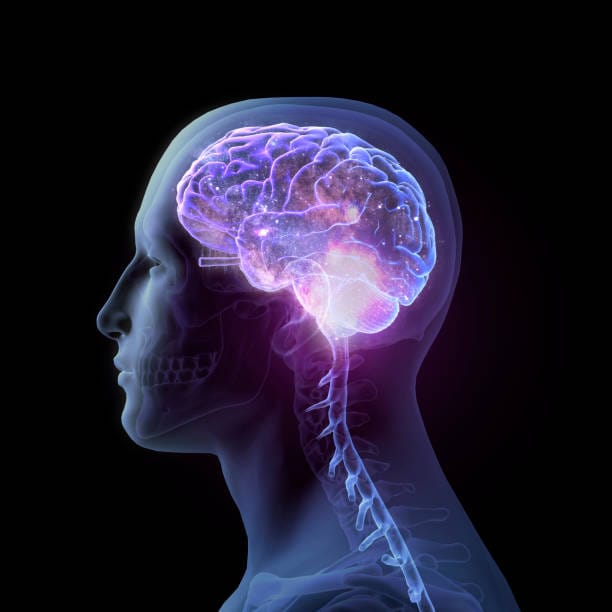Few debates stir as much passion as the one between evolution and creation. It’s a fault line not just between scientific theories and religious beliefs, but between entire worldviews—one shaped by empirical observation and logic, the other by faith, scripture, and spiritual meaning. For more than a century, this debate has been painted in stark colors: Darwin versus Genesis, fossil bones versus sacred texts, mutation versus miracle.
But beneath the surface, the tension is more nuanced. Science and religion do not speak the same language, nor are they asking the same questions. Yet both, in their own ways, seek to explain who we are and where we came from. The core question—can these two powerful ways of understanding ever find common ground?—is not just philosophical. It’s deeply human.
In the Beginning: The Birth of Two Narratives
In the Western world, the creation story in the Book of Genesis shaped civilization’s earliest attempts to explain life’s origins. In this account, God creates the world in six days, forming man from dust and breathing life into him. Woman is made from man’s rib. Animals are created fully formed. It is a story not just of physical origins, but of moral purpose and divine intention.
Then, in 1859, Charles Darwin published On the Origin of Species. His theory of natural selection was radical. It proposed that all species, including humans, evolved from common ancestors through a gradual process of variation and survival over millions of years. It was elegant, powerful—and deeply unsettling.
To the religious world, Darwin’s theory posed a direct challenge. If humans evolved from apes, what of the soul? If life is shaped by random mutations and survival pressures, what becomes of divine providence? For many, evolution was more than wrong—it was dangerous.
Yet for scientists, the evidence was—and still is—overwhelming. The fossil record shows transitional forms. DNA links all life. Embryology and comparative anatomy tell the same story: life on Earth is united by descent with modification. Evolution is not a belief. It is the foundation of modern biology.
The Clash That Changed Everything
The conflict came to a head in the United States during the famous Scopes “Monkey” Trial of 1925. John Scopes, a high school teacher in Tennessee, was charged with violating state law by teaching evolution. The courtroom became a battleground between modern science and traditional Christianity. Though Scopes was convicted, the trial was a turning point. It exposed the deep cultural rift and launched a public conversation that continues today.
Since then, creationism has evolved in its own way. Young Earth creationists believe the Earth is no older than 10,000 years and reject most of modern geology and biology. Intelligent Design advocates accept some science but argue that life is too complex to have arisen without a guiding hand. Meanwhile, scientists continue to uncover fossils, decode genomes, and trace the branching tree of life with ever more precision.
In classrooms, courtrooms, and congregations, the debate rages on. But does it have to?
Science and Faith: Speaking Different Truths
To understand whether science and religion can agree, we must first recognize that they ask different kinds of questions. Science seeks to explain how. Religion seeks to understand why.
Evolution, for instance, describes the process by which life diversifies over time through natural mechanisms. It doesn’t attempt to answer moral questions or explain life’s ultimate purpose. It can tell you how your body came to be, but not why you love, suffer, or hope.
Religion, on the other hand, addresses meaning, morality, and the human condition. Its sacred texts are not peer-reviewed studies but poetic narratives. Genesis was never written as a biology textbook. It was a spiritual vision of humanity’s place in creation.
Some theologians argue that trying to extract literal science from scripture is a mistake. The Bible was written in a pre-scientific era. Its truths are metaphorical, not mechanical. In this view, the seven days of creation might symbolize vast eons. The “dust of the ground” from which Adam is formed could well be the ancient stardust from which all matter arises.
The tension, then, may be more about miscommunication than true contradiction.
The Language of Evidence
Still, the scientific method is not neutral about truth. It requires evidence, reproducibility, falsifiability. Claims must be testable. Evolution passes these tests. Creationism, in its literal form, does not.
No experiment can prove that God created species in their current form. No fossil suggests a sudden, global genesis of modern animals. Radiometric dating consistently shows the Earth is 4.5 billion years old. Light from distant galaxies has taken billions of years to reach us. Geological strata reveal a long, slow history.
Evolution has explanatory power. It predicts patterns in genetics, morphology, and even ecology. It unifies disparate biological facts into a coherent whole. The modern synthesis—combining genetics with Darwin’s insights—makes evolution one of the most robust theories in all of science.
This doesn’t mean it answers every question. But it has withstood challenge after challenge. And that, in science, is the mark of truth.
Creation Redefined: A Spectrum of Belief
But belief is not all or nothing. Within religion, views on creation are remarkably diverse. Some hold fast to a literal reading of Genesis. Others adopt a metaphorical or allegorical interpretation.
The Catholic Church, for instance, officially accepts evolution. Pope John Paul II called it “more than a hypothesis.” Pope Francis has gone further, stating that God is not “a magician, but the Creator who brought all things to life.”
Many Protestants, Jews, Muslims, Hindus, and Buddhists also reconcile evolution with their faith. They see God not as a puppeteer who zaps creatures into existence, but as the origin of natural laws—laws that include evolution.
In this view, evolution is not the enemy of faith but its mechanism. The universe unfolds according to divine logic, and life evolves as part of that creative process. Random mutation, in this context, is not a threat to God’s sovereignty. It’s part of the intricate web of possibility.
This is the middle ground many seek: a synthesis where science explains the mechanics of life, and religion gives it meaning.
Why the Divide Persists
If so many can reconcile evolution and creation, why does the divide still feel so wide?
Part of the answer lies in culture and politics. In the United States, the evolution debate is entangled with identity, education policy, and religious freedom. For some, accepting evolution feels like surrendering to secularism. For others, rejecting it feels like denying reality.
Mistrust plays a role too. Some religious communities see scientists as arrogant, dismissive, or morally adrift. Some scientists see religious believers as irrational, anti-intellectual, or dogmatic.
Education is a battleground. Parents fear what their children will be taught. Lawsuits emerge over textbooks. Teachers walk a tightrope between fact and faith. The courtroom battles have only deepened suspicion.
And yet, underneath the surface, many quietly reconcile the two. The average Christian biologist may attend church on Sunday and study genetics on Monday without internal contradiction. The divide is often louder in politics than in the personal lives of real people.
The Search for Wonder
Perhaps what binds science and religion most deeply is wonder.
Both begin in awe. The scientist stares through a microscope and sees the dance of molecules. The mystic gazes at the stars and feels the presence of the divine. Both are humbled by complexity. Both sense that truth is vast, mysterious, and far beyond human grasp.
Albert Einstein, who was deeply spiritual though not conventionally religious, put it this way: “The most beautiful experience we can have is the mysterious. It is the source of all true art and science.”
There is no contradiction between awe and understanding. In fact, understanding often deepens awe. Knowing that stars are nuclear furnaces doesn’t make them less beautiful. Learning that humans share 98% of their DNA with chimpanzees doesn’t make us less special. It makes our journey even more extraordinary.
Evolution tells us that life is interconnected, dynamic, and resilient. Religion tells us that life is sacred, meaningful, and worthy of reverence. These are not enemies. They are perspectives—both vital, both incomplete alone.
Where the Conversation Goes Next
So, can science and religion ever agree?
Perhaps not in every detail. But agreement may not be the goal. Dialogue may be enough.
What matters is that both sides come to the table with humility. Science must acknowledge its limits. It cannot answer questions of ultimate purpose, love, or morality. Religion must acknowledge that its texts were written by humans in ancient times, not laboratories. Literalism, when applied to science, can be a dangerous distortion.
There is room for a story that includes both Darwin and Genesis—one where natural selection shapes the body, and spiritual yearning shapes the soul. Where atoms come together to form life, and consciousness awakens to ask why.
This synthesis won’t satisfy everyone. Fundamentalists on both sides may reject it. But for the millions who live in both worlds—who pray and reason, who believe and investigate—it offers a way forward.
It invites us to explore the full spectrum of human understanding: the measurable and the mystical, the physical and the philosophical, the seen and the unseen.
A Shared Journey Toward Truth
In the end, both science and religion are born from the same human impulse: the desire to know.
They are different paths, but not opposing ones. One carves through evidence, experiment, and data. The other moves through story, symbol, and meaning. Both, at their best, lead us to greater understanding—not just of the world, but of ourselves.
We are the product of evolution. We are also seekers of truth. Our brains, shaped by eons of survival, are now capable of pondering the infinite. That, in itself, is a kind of miracle.
If there is a place where science and religion meet, it is here—in the deep and abiding mystery of what it means to be human.






